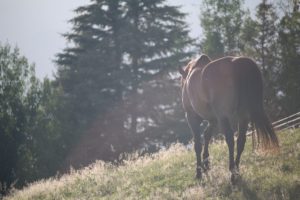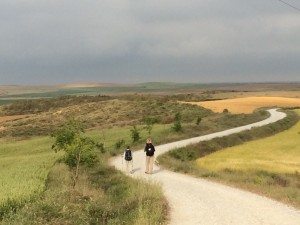There’s a thing you want to do, or believe you should do, or are being told you need to do, and you just don’t get it done. What’s that about?
When you’ve had an item on your to-do list for weeks or months or even years, and it just gets heavier and heavier, saps more and more of your energy and confidence, what’s that about?
When you just aren’t getting the thing done, is it possible you’re not just a lazy dumb slacker? Is it possible that you’re being wise, rather than just stupidly afraid?
There are plenty of wise reasons for not doing a thing.
Maybe this is a thing you shouldn’t do. Maybe it isn’t yours to do. Maybe you’re not ready yet. Maybe you really do need more information. Maybe you decided to do this thing when you were a different person – a naïve person, a more easily influenced person, a person who didn’t yet know what she wanted.
Maybe you’re just not ready to accept the changes this dream entails.
Maybe you have other priorities just now, and this thing isn’t as important. Maybe you’re not afraid of doing the actual thing, but of the overwhelm you’ll feel if you take it on.
I think we judge ourselves for not doing the thing we say we want to do. We jump to beating ourselves up for feeling afraid, or being lazy, or just not having what it takes to reach our goals.
But what if the reluctance you’re feeling isn’t stupid fear, but wise resistance?
How do you tell the difference? Here’s one way that works for me and my clients.
1. Bring to mind that thing that’s nagging you. That thing you’ve had on your list for so long. That dream you’ve been yearning to make real.
Really inhabit this possible future. Let yourself, in your imagination, live into the reality of doing the thing. Give yourself time to fully be there.
2. Notice what’s going on in your body. (Yes, there’s the body again!)
There you are, having run the marathon, written the book, gotten the divorce, cleaned the basement. Whatever your thing is, you’ve done it.
3. How do you feel? What’s going on with your breath? What’s going on with your belly? What’s going on with your neck and your shoulders? What’s your expression?
Do you feel light or heavy? Do you feel warm or cold? Do you feel relaxed or stressed? Do you feel open or closed?
What we’re looking for here, when you’re in your body imagining having done the thing that’s calling you, is whether you feel fundamentally expanded or contracted.
4. If you feel mostly expanded, opened up, lighter and warmer, these are signs that you really do want to do this thing. To create this thing. To make this dream into reality. Your reluctance is mostly stupid fear. And you probably want to move beyond your fear-based obstacles.
On the other hand, if you feel mostly contracted, colder, tighter, and heavier when you’re imaginatively inhabiting the future where you’ve gotten your thing done, these are signs that this thing you’ve got on your list should be crossed off, if possible. Your reluctance is mostly wise resistance.
Your body is telling you the truth.
Now you know if your reluctance is mostly wise resistance or stupid fear, and you can make an informed choice.
You have three options: do the thing now, commit to doing it later, or let it go.
So what will you choose? Will you intentionally put that thing in a “parking lot” and come back to it later? Will you let go of it for good? (I suggest ritualizing your letting go, so the thing feels well and truly done.)
Or will you choose to work with your fear, go beyond it, and finally do your thing?
If you’ve concluded that you really want to do the thing now, keep reading.
I’m developing a four-session coaching package devoted to getting your thing done. This package is focused on doing just one thing. It comes with pre-session focus and alignment questions, between-session check-ins, science- and soul-based tools and exercises for every step of the journey, and lots of private time with me.
If you’ve ever wondered if coaching is right for you, this is a perfect way to find out. Because this package is under construction and so tightly focused, I’m offering it at a super low rate for a limited time.
Imagine how good it would feel to get your thing done. Then go here for more information and to schedule a free, no-obligation clarity call. I look forward to connecting with you!
And if you’d just like companionship for 30 minutes or so to work through the process above, I’m here for that, too. Contact me here to schedule.
Tag Archives: commitment
Give Yourself Gentle Fences
Choose to put some gentle fences in your pasture … Be in integrity with yourself. ~Sarah B. Seidelmann
Choose to build some gentle fences in your pasture. Choose to give yourself the gift of good grass and clear cold water. Keep yourself out of the weedy patches and away from traffic. Your life is tenuous – this ligament between body and soul is flesh and bone, easily fractured.
Give yourself gentle fences. Because you love your soul, your spirit, give yourself structure and safety. Your spirit is captive to your mind. Teach your mind to be kind.
What would gentle fences look like for you?
Would gentle fences look like saying “Yes” to a yearning? Would they look like committing to a dream? Would they look like saying “No” to someone? Would they look like more white space in your calendar?
Would gentle fences look like carving out time for what feeds you, consistently and intentionally?
Would they look like noticing when you’re not kind to yourself, and learning a different way?
Would gentle fences look like noticing what you do that takes you away from your priorities, and choosing not to do that anymore?
Here are some gentle fences I’m building. I’m committing to consistently writing. I’m putting boundaries around my creative time. I’m not consuming media that leaves me feeling pummeled, and I’m taking a walk instead. I’m examining my habits in light of my priorities and making changes.
I’d love to hear what gentle fence you’re building for yourself in the comments.
Want to talk further? Contact me and we’ll set up a time.
(Sarah is a physician turned shamanic healer. Check her out here.)
Photo by Richard Austin on Unsplash
Pilgrimage: Die Before You Die, and Have Fun Doing It!
Why walk 500 miles to Santiago de Compostela? I mentioned my struggle with this question to a very thoughtful friend, who said, “It used to be that to get to Compostela you had to walk to Compostela.” That’s clearly no longer true. In our modern world, with instant communication, almost-instant travel, and diversity of religious beliefs, walking to Santiago de Compostela is a choice. Most of us no longer believe that making pilgrimage to a saint’s tomb will give us a free pass to heaven, even if we think we need such a pass. We don’t believe that the relics in cathedrals, even if they are really from the true cross or the corpse of some long-dead holy person, confer any special mojo — any special forgiveness of sins. (Related question: what are sins?)
Indeed, there were moments on Jed’s and my recent pilgrimage when walking to Santiago seemed the opposite of holy. It seemed possibly cruel and probably a sign of mental illness to walk through pain. I have been wondering why we do it. Why I did it. Yet people who make this choice seem to benefit from their walk. Why?
Here’s my current hypothesis: We go on pilgrimage to practice dying, and because pilgrimage is really fun.
1. Pilgrimage as practice in dying: Pilgrimage, like any discipline, is practice in letting go of ego and expectations. It’s an expansion of our comfort zones in order to commit to what we truly value. Daily prayer or meditation, intentional service of others, eating a vegan diet, writing three pages every morning, whatever — discipline is learning how to do the hard stuff. God knows it seems easier to stay in life’s comfortable shallow end, trying our damndest to keep pain and fear at bay. For most of us, life will bring painful stuff — illness and death and loss in all its forms. C.S. Lewis said, “Die before you die. There is no chance after.” Pilgrimage is an opportunity to “die before you die,” to practice staying present to pain and fear, to practice letting go of control and expectations. When we stay present and open to pain and fear, we become more resilient and confident in our abilities to choose love in the midst of pain.
Pilgrimage allows us to do hard things in a relatively safe context — supported by ancient history and tradition, following directions and instructions that are millennia old, and in the company of others doing the same work.
2. Being a pilgrim is just plain fun. Even when I felt tired and sore, the Camino’s freedom and focus, hospitality, intellectual stimulation, companionship, rich social life, ample outside exercise, and incredible beauty were simply and juicily fun. I never stopped saying and thinking, “Honey, we’re in Spain. We’re in SPAIN!” The gift of being in the pilgrimage bubble, outside of normal time with its demands and constraints, was priceless. I felt at home in my body again — at one with my “god pod.”*
So, these are my answers for why modern pilgrims leave their homes to walk miles and miles: To practice doing hard things, and to have vast amounts of fun.
There’s a lot more to unpack, which I will be doing over the coming weeks on the blog now that my thinking is more coherent.
Thanks for walking with me. ¡Buen Camino!
Photo credit: Joe speetjens, a fellow peregrino from mississippi.
*”God Pod” coined by fellow martha beck coach susan hyatt



